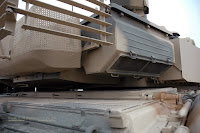For lovers of physics and philosophy, let me present the
Special Theory of Relativity (SRT) in a new simple interpretation.
The derivation of the basic relations of SRT ( Lorentz
transformations) is possible from the coordinate transformations of rotation on
the Euclidean plane by means of a new geometric interpretation of relativistic
measurements.
1)
We arbitrarily choose an orthogonal coordinate system
with the origin of coordinates O on the Euclidean plane and denote it by the
axes: (X, Y '). Let's rotate it through the angle α. The rotated
system will be denoted by the axes (X ', Y).
Let us express the coordinates of point A in the
original system (X, Y ') through its coordinates in the rotated system (X', Y):
x = x'⋅cosα + y⋅sinα
y'= y⋅cosα - x'⋅sinα
1) ⇒ 2)
2) x = (x'– y⋅sinα) / cosα
y = (y'+
x⋅sinα) / cosα
3) All that remains for us is to give the correct
physical interpretation of what is shown in the figure. This is not difficult
if we assume that the localized consciousness of the observer S moves in one
direction parallel to the Y axis, passing the point-event A.
As can be seen from 2), the coordinate y' is "lagging''
in relation to y, and x' experiences a 'contraction of the length of the moving
rod'!
When replacing y by ct, y' by ct', sinα = v / c, cosα
= (1 - (v / c) 2) 1/2, it turns out that the rod moving
relative to the observer S is defined for S as a rod of length:
x⋅cosα = x⋅ (1 -
(v / c) 2) ½
At the same time, in the frame of reference (cT ', X)
moving with respect to S, the rod is at rest, and its length is equal to x.
The time observed from S on the cT' scale will lag
behind the readings observed by S on the cT scale in the direction of movement
of the observer S: ct '= ct⋅cosα.
Returning to point 2): in it, the equation for x -
corresponds to the direct Lorentz transformation, and the equation for y = ct -
to the inverse Lorentz transformation:
x = (x'–
t⋅v) / (1 - (v /
c) 2) 1/2
ct = (ct
'+ x⋅v /c) / (1 - (v
/ c) 2) 1/2
Thus, the physical interpretation of SRT effects is
possible if we assume the motion of the localized 'Ego' of the observer in
Euclidean space, where the direction of motion acts as 'proper time'. In this
case, the coordinate transformations of the time and distance measurement data,
in fact, correspond to the coordinate transformations during the transition
from one rectangular Cartesian coordinate system to another, rotated by a
certain angle with respect to the first. All the features of these
transformations are explained by a specific physical interpretation, or in
another way: by special rules for linking measurement data to coordinate axes.
The above can be formulated in a shorter way: the standard interpretation of SRT is misleading as to the true nature of space-time. This misconception stems from a misunderstanding of the measurement of spatial distances. In the general case, the result of the measurement carried out by a stationary observer should be attributed to a moving frame of reference. And vice versa: the result of measuring the distance, carried out by a moving observer, should be attributed to a stationary frame of reference. If in this way we correlate measurements with coordinate axes, the whole SRT is geometrically described in 4-dimensional Euclidean space-time, which, if desired, can be considered Kantian in the philosophical sense of the word.

















